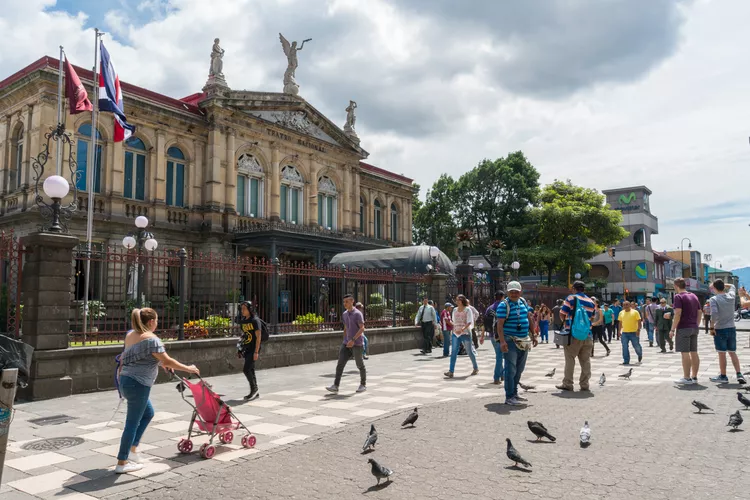Summary
San José is home to one-third of the population of Costa Rica and serves as the economic, cultural, and geographical center of the country. Even amidst the urban landscape, the presence of a tropical climate is unmistakable, reflected in the warm air and the sounds of jungle birds.
Located in Costa Rica’s Central Valley, San José was first colonized in the 1500s and became the nation’s capital in 1823. Although some travelers may find the initial impressions of San José, particularly upon arrival at Costa Rica’s international airport, to be noisy and overwhelming, the city has a unique charm that draws people in. In fact, around 250,000 foreigners have decided to settle here, with a significant number being American expatriates. The city is also a hub for Spanish language schools and notably, the University of Costa Rica.
What to Do in Costa Rica’s Capital
Exploring the unique urban culture of San José is best done on foot. The city is dotted with public parks, markets, and courtyards that serve as meeting spots for its friendly residents known as Joséfino. Here are some must-see locations:
- Mercado Central: A vibrant central market where you can find local goods and souvenirs.
- Avenida Central: A pedestrian-friendly area filled with shops and restaurants, starting just beyond Mercado Central.
- El Pueblo: The nightlife hub of San José, offering diverse options for dining and entertainment.
- Teatro Nacional de Costa Rica: This historic theater is one of the city’s grand architectural gems.
- The Simon Bolivar Zoo: Home to various endemic species, although experiencing wildlife in their natural habitat is recommended.
- The San Pedro Mall: Among the largest malls in Central America, featuring a wide array of shops over nine floors.
- The Arenal Volcano: A day trip opportunity for hiking and enjoying thermal pools amid breathtaking scenery.
Accessing Costa Rica’s Best Beaches From San José
While San José serves as the capital, it is important to note that the best beaches in Costa Rica lie outside this landlocked city. Notable nearby beaches include Jaco Beach, located less than two hours away, and Manuel Antonio, which is approximately four hours from the capital. Travelers wishing to reach the southern beaches of the Nicoya Peninsula, including Montezuma and Mal Pais, ought to take a bus to Puntarenas followed by a ferry ride.
When to Go
The rainy season in San José spans from April to late November, with generally warm and humid conditions prevailing throughout the year. The most comfortable time to visit is undoubtedly during the December holiday season, when the city attracts many locals and travelers participating in festive celebrations.
In even-numbered years, San José hosts the Festival de Arte in March, showcasing a delightful mix of films, music, theater, and other art forms.
Getting There and Around
Costa Rica’s international airport, Juan Santamaría (SJO), is situated approximately twenty minutes from San José in Alajuela. Taxis are readily available outside the airport, offering a convenient and fixed fare service to the capital that costs around $12 USD. It is advisable to utilize licensed taxis that are marked with “Taxi Aeropuerto.” For those opting for independence to explore the city and beyond, car rentals are available at the airport.
A bus stop is located outside the airport, connecting travelers to Costa Rica’s comprehensive bus network, offering varying types of services from comfortable air-conditioned buses to local “chicken buses.” Most buses accept colones only. The main bus terminal in San José is known as the Coca Cola Bus Terminal, where schedules and destinations may vary. Additionally, international bus lines such as Ticabus and King Quality offer routes to other Central American countries.
Other Tips
As urban populations grow, theft and crime have become more prevalent in San José. Vigilance against pickpockets and petty thieves is essential, especially in busier locales such as Mercado Central. It is wise to use taxis during nighttime, even for short distances.
Although prostitution is legalized among consenting adults in Costa Rica, the increasing risk of HIV remains a concern. Most adult-themed entertainment can be found in San José’s Red Light District, known as the “Zona Rosa,” located north of the downtown area.
Interestingly, according to the U.S. National Geospatial-Intelligence Agency, San José is the most commonly used city name globally.





